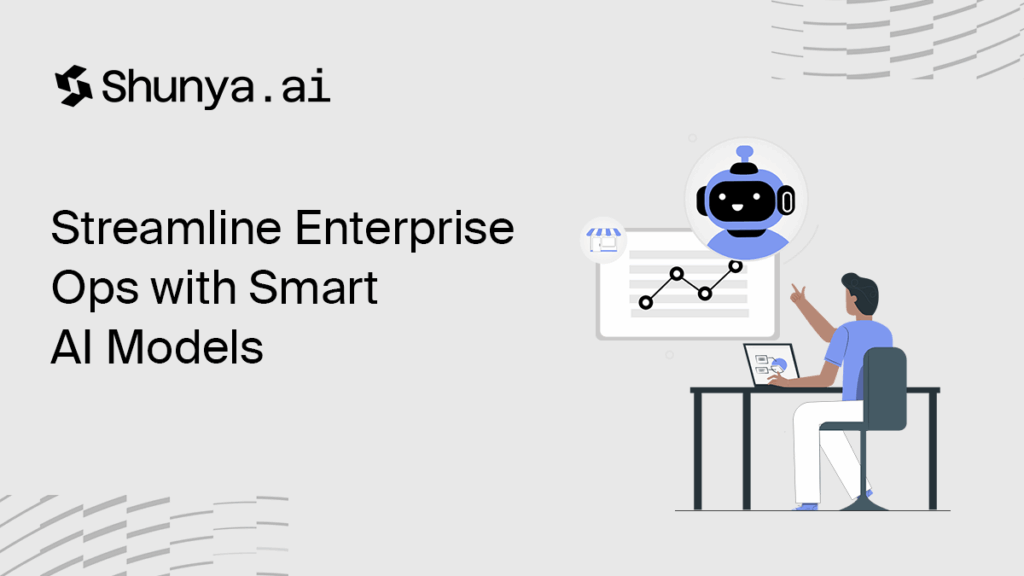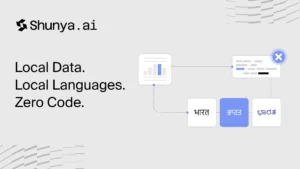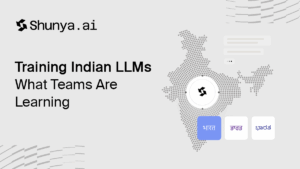Blog Summary
|
AI is reshaping production systems, and InferenceOps is the missing link between model development and real-world impact. As organisations scale their use of artificial intelligence and machine learning, managing performance, speed, and accuracy in production becomes crucial.
InferenceOps, or Inference Operations, ensures your models run efficiently after deployment, delivering consistent value where it matters most. Utilising AI technologies like InferenceOps can significantly enhance the efficiency and output of manufacturing operations, potentially by up to 40%. Intelligent automation and optimisation can help businesses cut costs by 30% and reduce production time by 50%. AI for predictive maintenance can prevent unplanned downtime (45%), significantly lowering maintenance costs (30%).
InferenceOps helps streamline the operation of AI models in production, monitoring performance, managing latency, scaling efficiently, and adapting to real-time demands. Let’s find out how in this blog.
Why Businesses Must Rethink AI Operations?
Here are the key reasons why business should rethink their AI operations:
AI as Business Transformation, Not Just Technology Deployment
Many companies have stalled at small-scale AI deployments that yield minor productivity gains but fail to create a real impact. Treating AI as a side tool leads to fragmented efforts that don’t scale. To make a real impact, businesses must embed AI into the core of their operations, reshaping processes. This shift enables long-term growth and measurable results.
In fact, 64% of businesses already anticipate productivity boosts, with 25% deploying AI to address labour shortages. It’s a direct response to workforce constraints in a post-pandemic world.
Increasing Competitive Pressure
The rapid pace of AI evolution means that a competitive advantage is at stake. Sectors such as retail, technology, and finance are facing new challenges, where leaders succeed by deeply embedding AI, from hyper-personalised customer engagement to dynamic pricing and product development. Waiting too long or remaining in experimentation puts businesses at risk of being left behind, as AI integration is essential for survival.
Necessity for Process Redesign and Organisational Change
Simply layering AI onto existing workflows is insufficient. Instead, organisations need to undertake sero-based process design, rethinking every business process with AI at its core. This often requires building entirely new operational models, reskilling talent, and updating governance structures to handle the proliferation of AI-generated data and agentic workflows.
Human-Centric and Ethical Considerations
As AI systems increasingly take on autonomous decision-making, businesses must reassess their approach to ethics, transparency, and privacy. Responsible AI use requires building trust with customers, employees, and society while ensuring fairness, safety, and accountability.
Avoiding Over-Reliance on Templates and Copy-Paste Solutions
Many entrepreneurs and businesses have approached AI automation by relying on prebuilt templates and solutions. While these can drive quick wins, they often hinder long-term growth, scalability, and real process mastery. Success requires a deep understanding of specific business needs and the design of tailored, strategic AI solutions, rather than generic, out-of-the-box approaches.
Unlocking Reinvention and New Business Models
AI is not only a tool for improving efficiency, but also the primary driver of transforming business operations and driving growth. It can help your business create new revenue streams, improve operational efficiency, and deliver personalised customer experiences. Companies that embrace this shift are not only improving performance but are also exploring fundamentally different ways to move ahead.
How Does InferenceOps Change the AI Development Mindset?
Let’s find out how InferenceOps changes the AI development mindset:
From Research Prototype to Efficient Production
InferenceOps reframes inference not just as a technical process, but as a direct reflection of product quality. The logic is straightforward: the reliability and speed of model inference significantly impact the user’s experience and ultimately determine the value delivered by AI systems. Instead of treating model deployment as a one-time milestone, InferenceOps involves ongoing processes similar to how DevOps transformed software engineering, including monitoring, versioning, automated testing, blue-green and canary releases, and rapid rollback capabilities.
Core Principles Shaping the Mindset
Inference is seen as the ‘delivery mechanism’ for AI, not just a backend process. Investments in scalable, flexible, and observable inference infrastructure become as critical as model selection and training.
InferenceOps standardises deployment, scaling, and monitoring practices, making them more repeatable and auditable. Automated CI/CD for models, managed versioning, and resource hygiene, like auto-cleanup of idle GPUs, prevent costly operational mistakes and reduce technical debt.
Like DevOps, InferenceOps blurs the lines between data scientists, engineers, and operations, fostering a culture where teams build, monitor, and iterate together instead of in silos.
Practical Impact
With inference workloads growing in both complexity and volume, InferenceOps introduces best practices for cost optimisation, resource allocation (across CPUs, GPUs, and cloud/on-prem), and ensures that infrastructure scales with business demands without waste.
New metrics and monitoring approaches are adopted, extending beyond basic system health to include inference-specific measures (e.g., token latency, throughput, and success rate under load), enabling rapid troubleshooting and continuous improvement.
By abstracting infrastructural complexity and automating routine operations, InferenceOps enables developers to spend more time experimenting and less time managing infrastructure, thereby accelerating the time to market for new features and models.
Why is InferenceOps the Missing Piece in AI-Driven eCommerce?
Without mature InferenceOps, eCommerce leaders encounter three persistent barriers:
Execution Gap
While 90% of eCommerce leaders agree that personalised experiences are essential and see AI as critical, less than half have active AI use cases, mainly because they struggle to operationalise models at scale.
Customer Experience Bottleneck
The full potential of AI, enabling personalised shopping, agentic commerce, and dynamic recommendations, can only be realised with robust, real-time inference. Current systems often require human intervention or operate within closed platforms, limiting reach and authenticity.
In 2020, 63% of manufacturers had already implemented AI in at least one business function. Nearly 70% of manufacturing leaders now expect profitability gains of 3 percentage points or more, proving that effective AI deployment through InferenceOps is economically viable.
Operational Overhead and Data Complexity
Scaling AI across workflows requires automated, reliable, and observable inference pipelines that integrate seamlessly with business systems and meet the needs for privacy, security, and latency.
Here are some reasons why InferenceOps is the missing piece:
- Seamless end-to-end automation: InferenceOps powers fully autonomous AI agents that do more than assist; they act, transact, and personalise in real time. This shifts commerce from decision-heavy processes to ‘zero-click’, context-aware, and AI-driven interactions.
- Real-time personalisation at scale: Personalised recommendations, dynamic pricing, and guided commerce depend on low-latency, high-accuracy inference in real time. It’s a requirement only satisfied by operationalised inference workflows that InferenceOps delivers.
- Competitive advantage and future-proofing: Companies with strong InferenceOps can break through adoption barriers, integrate AI for both back-office efficiency and customer engagement, and iterate fast, achieving both operational gains and customer loyalty.
What Are the Key Principles Behind InferenceOps in Fulfillment Systems?
The key principles behind InferenceOps in fulfillment systems include:
Treating Inference as a Critical Production Layer
Inference should not be an afterthought. Instead, it needs to be managed with the same rigour as other core operational processes, recognising that inference quality directly impacts product and service quality for fulfillment operations.
Unified and Standardised Workflow Management
Modern fulfillment systems use various models, ranging from demand forecasting to route optimisation, each with distinct performance and resource requirements. InferenceOps emphasises a standardised, unified approach to manage diverse workflows, preventing operational sprawl, and enabling consistent control and innovation across the entire fulfillment pipeline.
Compute Agnostic and Scalable Infrastructure
Since different inference tasks, including real-time prediction for picking routes or batch forecasting for inventory, have varying compute and latency needs, InferenceOps supports deploying inference workloads across multiple hardware types, cloud providers, and physical locations (e.g., edge sites, data centers), maximising flexibility, avoiding vendor lock-in, and controlling costs.
Resiliency and Reliability
Robust, automated pipelines with strict SLAs and uptime guarantees are essential, especially for latency-sensitive fulfillment operations. This mandates LLM/AI-specific observability tools, automated model deployments, and monitoring that go beyond traditional system metrics to ensure uninterrupted, high-quality service.
Continuous Optimisation and Automation
Running inference in fulfillment is not static. There is an ongoing need to automate updates, optimise performance, and identify inefficiencies. This involves automated code and model releases, seamless scaling, and rapid rollbacks, all to minimise downtime and human error.
Data Integration and Transparency
Seamless integration between inference systems and core fulfillment components, like warehouse management and order processing systems, ensures real-time visibility into inventory, demand, and operational status. This enables accurate and dynamic decision-making within fulfillment workflows.
Security and Predictable Costs
Since fulfillment systems handle mission-critical operations, InferenceOps platforms must ensure data security, privacy, and cost predictability, especially as inference scales to serve thousands of transactions per second.
Why Is Shunya.ai at the Core of Scalable InferenceOps Models?
Shunya.ai is India’s first sovereign multimodal InferenceOps platform. It’s built to scale AI across India’s languages, documents, images, and real business workflows. Most AI platforms today are built on Western data and only lightly adapted for India.
Shunya.ai starts with India at the center, with voice, text, and image agents trained natively on Indian data, documents, and workflows. This makes it suitable for scalable, real-world AI deployments, from kirana stores to public sector banks. Whether you’re parsing invoices in Marathi, replying to WhatsApp leads in Hinglish, or cataloguing products with photos, Shunya.ai handles it all, securely, affordably, and at scale.
Here’s how Shunya.ai powers scalable InferenceOps:
- Natively Indian Models: Trained on vernacular voice notes, invoices, and commerce data, not Western fine-tuned.
- Unified Multimodal Agent: One AI handles text, voice, and images, and no fragmented tools or silos.
- Pre-Built for Workflows: Ready-to-use agents for cataloguing, customer support, invoicing, WhatsApp replies, and more.
- Scalable for All Sises: Free to Rs. 499 per month for SMBs, with private enterprise deployments, with no dollar-based surprises.
- Sovereign and Secure: Hosted in India, fully compliant, private deployments to keep your data in your control.
- Commerce-First DNA: Built with Shiprocket’s seller intelligence, to understand real Indian business flows natively.
Conclusion
InferenceOps is the operational backbone of modern AI systems. You can’t overlook how your models work once the development process is completed. With InferenceOps, you gain control over model performance, latency, scalability, and cost-efficiency. These are all essential for production-grade AI.
AI adoption is accelerating across industries, and mastering InferenceOps gives you a clear advantage in the industry. Deploying AI will not give you the results you want to achieve, but optimising it for real-world impact will.
InferenceOps involves managing, deploying, and scaling AI model inference in production, with a focus on cost, reliability, scalability, and security, particularly for large language models (LLMs).
Key aspects of InferenceOps include standardised CI/CD workflows, safe deployment strategies, resource and cost management, performance tuning, access control, and detailed monitoring to meet inference SLAs.
As of 2025, nearly 80% of manufacturers are adopting AI to enhance efficiency, reduce costs, enable predictive maintenance, improve quality control, and support smarter, more resilient, and sustainable production.



